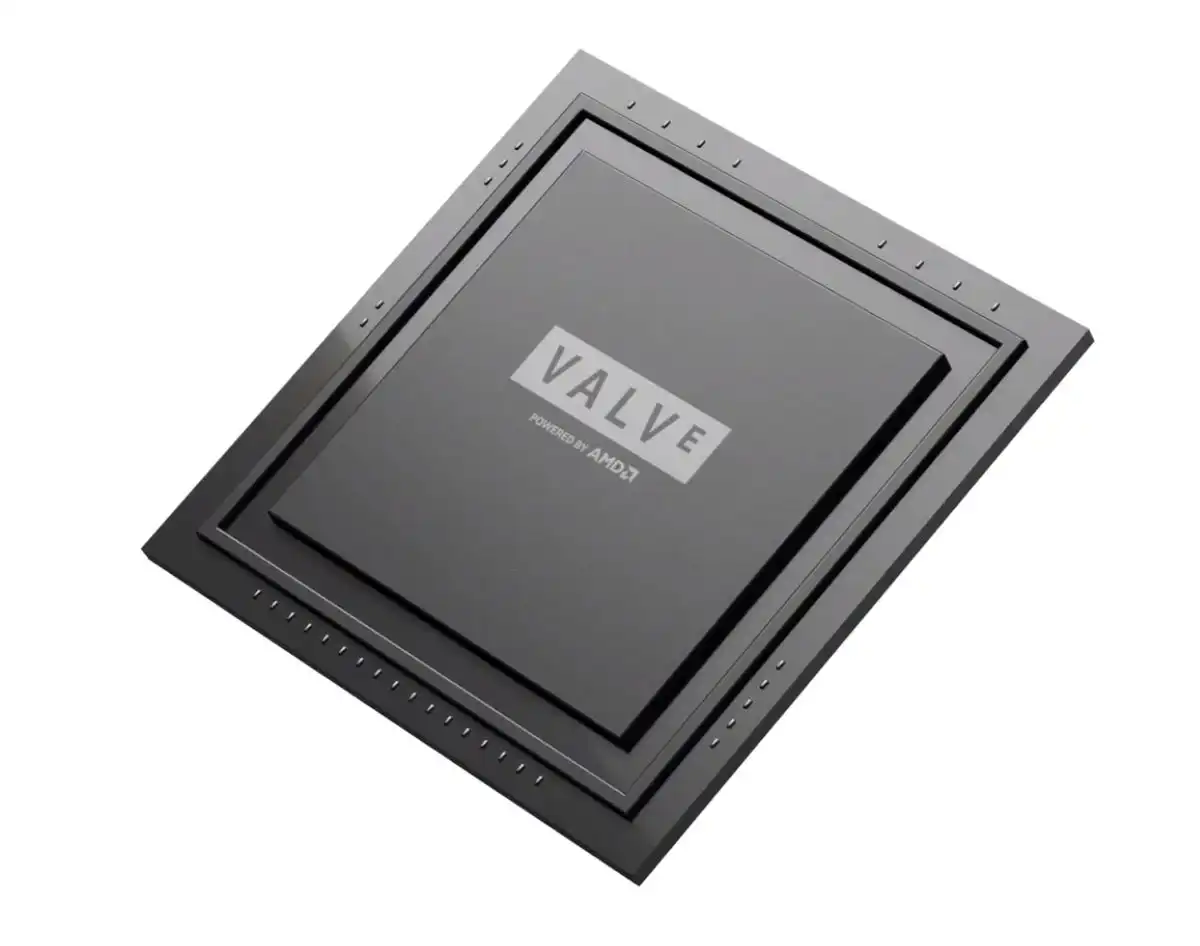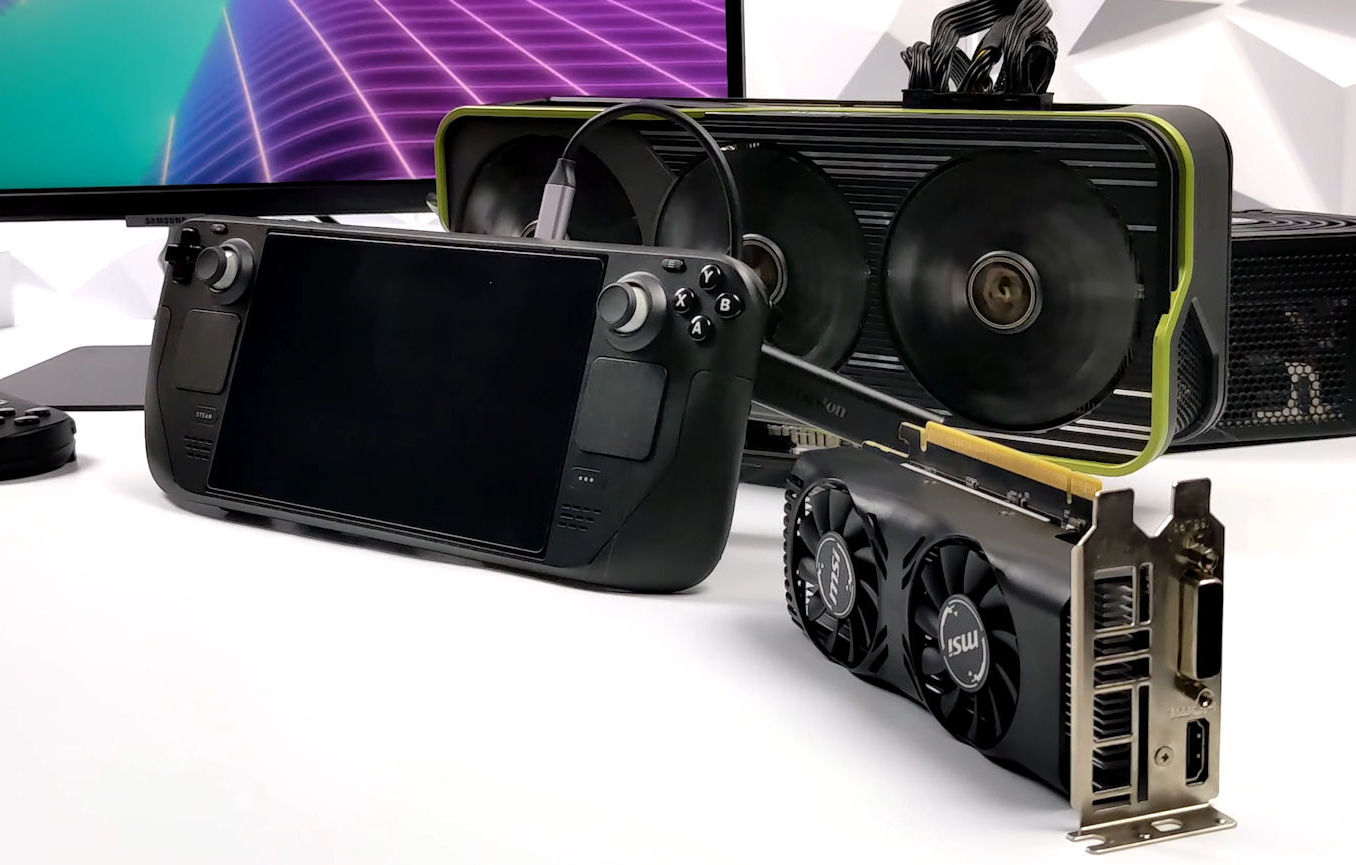Introduction
Welcome to the world of portable gaming with the Steam Deck! In recent years, the demand for handheld gaming devices has skyrocketed, and Valve has stepped up to the plate with an impressive contender. The Steam Deck is a portable gaming device that allows gamers to take their favorite PC games on the go. With a sleek design, high-quality display, and impressive hardware, it’s no wonder that gamers around the world are buzzing with excitement.
One of the key components that contributes to the performance of any gaming device is the central processing unit (CPU). The CPU is responsible for executing instructions, performing calculations, and managing various tasks within the device. It plays a crucial role in determining the overall gaming experience, including graphics rendering, speed, and efficiency.
In this article, we’ll explore the CPU inside the Steam Deck and delve into the technical specifications and performance capabilities it brings to the table. Whether you’re a gaming enthusiast or simply curious about the inner workings of this handheld gaming device, join us as we dissect the CPU powering the Steam Deck.
What is the Steam Deck?
The Steam Deck is a revolutionary handheld gaming device developed by Valve Corporation, the creators of the popular online gaming platform, Steam. It combines the convenience of a handheld console with the power of a gaming PC, allowing gamers to play their favorite PC games on the go.
Featuring a sleek and ergonomic design, the Steam Deck boasts a 7-inch touchscreen display with a resolution of 1280×800 pixels. The display delivers vibrant colors and crisp visuals, ensuring an immersive gaming experience wherever you are.
With built-in controls including thumbsticks, D-pads, and an array of buttons, the Steam Deck offers a familiar gaming experience similar to traditional gaming consoles. Additionally, it comes with built-in gyro controls, enabling intuitive motion-based gameplay.
One of the standout features of the Steam Deck is its ability to run the entire Steam library, giving gamers access to a vast collection of games across various genres. This means you can enjoy AAA titles, indie games, and everything in between, right at your fingertips.
Moreover, the Steam Deck features a custom operating system called SteamOS, which is optimized for gaming performance. It allows users to access their Steam library, friends, and community features, providing a seamless and integrated gaming experience.
But what sets the Steam Deck apart from other handheld gaming devices is its impressive hardware specifications. Powered by a custom CPU and GPU, it delivers high-performance gaming that rivals traditional gaming PCs. In the next section, we’ll dive deeper into the importance of the CPU and how it contributes to the overall gaming experience on the Steam Deck.
Why is the CPU important?
The central processing unit (CPU) is the brain of any computing device, including gaming consoles. It dictates the overall performance, speed, and efficiency of the system. In the case of the Steam Deck, the CPU plays a crucial role in delivering a smooth and immersive gaming experience.
First and foremost, the CPU is responsible for executing instructions and performing calculations. In gaming, this translates to handling tasks such as physics simulations, artificial intelligence routines, and game logic. A powerful CPU can handle these tasks quickly and efficiently, resulting in realistic physics, intelligent enemy behavior, and seamless gameplay.
Furthermore, the CPU works in tandem with the graphics processing unit (GPU) to render graphics and deliver stunning visuals. It helps in handling complex rendering techniques, such as shading, lighting, and particle effects. With a high-performance CPU, gamers can enjoy visually impressive games with smooth frame rates and minimal lag.
Another important aspect of the CPU is its ability to manage multiple tasks simultaneously. With the Steam Deck, gamers might want to do more than just gaming. They may want to stream their gameplay, chat with friends, or run other applications in the background. A powerful CPU can handle these tasks efficiently without impacting gaming performance.
Moreover, the CPU plays a significant role in system responsiveness and loading times. It affects how quickly the device can launch games, load game levels, and navigate through menus. A faster CPU can significantly reduce loading times, allowing gamers to jump into their favorite games quicker and spend less time waiting.
Additionally, the Steam Deck runs on a custom operating system that relies on the CPU for smooth operation. The CPU helps in managing the operating system’s tasks, such as handling background processes, memory management, and system optimizations. This ensures that the Steam Deck runs efficiently and can maximize its performance for gaming purposes.
In summary, the CPU is a vital component in any gaming device, including the Steam Deck. It directly influences the gaming experience, including graphics rendering, speed, responsiveness, and multitasking capabilities. Now that we understand the importance of the CPU, let’s dive into the specifics of the CPU inside the Steam Deck in the next section.
The AMD Zen 2 Architecture
At the heart of the Steam Deck’s processing power lies the AMD Zen 2 architecture. Developed by AMD, Zen 2 is a cutting-edge CPU architecture that delivers impressive performance and efficiency. It represents a significant leap forward in gaming technology, providing gamers with a powerful and immersive gaming experience.
The Zen 2 architecture is built on a 7-nanometer process, which allows for more transistors to be packed onto the silicon die. This increased transistor density results in improved performance and energy efficiency. The Zen 2 architecture also introduces a new microarchitecture, which includes various enhancements and optimizations over its predecessor, Zen.
One of the key improvements of the Zen 2 architecture is its increased instruction per clock (IPC) throughput. IPC directly affects how many instructions the CPU can execute per clock cycle, which ultimately leads to better overall performance. With Zen 2, AMD has managed to achieve a significant IPC improvement, resulting in faster and more efficient processing.
The Zen 2 architecture also introduces support for simultaneous multithreading (SMT), which allows each CPU core to handle two separate threads simultaneously. This improves overall multitasking capabilities and can significantly boost performance in applications that can effectively utilize multiple threads, such as gaming.
Another noteworthy feature of the Zen 2 architecture is its enhanced cache structure. The CPU features larger and faster caches, including a larger level 3 (L3) cache, which helps reduce memory latency and improves gaming performance. This results in quicker access to frequently accessed data, leading to smoother and more responsive gameplay.
Additionally, the Zen 2 architecture brings advanced power management capabilities, allowing the CPU to dynamically adjust its clock speeds and power consumption based on the workload. This ensures optimal performance while keeping power consumption in check, which is crucial for a portable device like the Steam Deck with limited battery life.
Overall, the AMD Zen 2 architecture is a significant technological advancement in CPU design, bringing forth improved performance, efficiency, and multitasking capabilities. It provides a solid foundation for the Steam Deck’s CPU, ensuring that gamers can experience smooth gameplay and impressive graphics rendering on the go. In the next section, we’ll dive into the specific CPU powering the Steam Deck and its customizations.
Steam Deck’s CPU: The AMD Custom APU
The Steam Deck is powered by a custom-designed accelerated processing unit (APU) developed by AMD. The APU combines both the central processing unit (CPU) and the graphics processing unit (GPU) onto a single chip, ensuring a seamless integration of processing and graphics capabilities.
The custom APU inside the Steam Deck is based on the AMD Zen 2 architecture, which we discussed earlier. However, it also features modifications and customizations specifically tailored for the needs of the handheld gaming device.
One key customization is the optimization of power consumption. The Steam Deck is a portable device that relies on battery power. Therefore, it is crucial to ensure that the CPU operates efficiently while delivering optimal performance. AMD has worked closely with Valve to fine-tune the APU’s power consumption, maximizing battery life without sacrificing performance.
Another customization is the integration of AMD’s RDNA 2 architecture into the APU, providing advanced graphics capabilities. The RDNA 2 architecture is the same architecture found in modern gaming consoles and high-end graphics cards. Its inclusion in the Steam Deck’s APU ensures high-quality visuals and immersive gaming experiences on the handheld device.
Moreover, the Steam Deck’s APU features a customized clock frequency to balance performance and temperature. It is designed to deliver optimal performance while maintaining thermal efficiency, preventing overheating during intense gaming sessions. This is especially crucial for a handheld device where airflow and cooling capabilities are limited.
Additionally, the APU incorporates AMD’s Infinity Cache technology, which improves memory latency and enhances gaming performance. The Infinity Cache acts as a high-speed cache that stores frequently accessed data, allowing for quicker access and reducing the need to fetch data from slower main memory.
Furthermore, the custom APU includes specialized hardware for video decoding and encoding, enabling smooth playback and streaming of high-resolution video content. This enhances the multimedia capabilities of the Steam Deck, making it not just a gaming device but also a portable entertainment hub.
All these customizations and optimizations make the AMD custom APU inside the Steam Deck a powerful and efficient processing powerhouse. It offers the performance needed for demanding PC games, while still being tailored to fit the power and thermal constraints of a handheld device. In the next section, we’ll dive into the specific CPU specifications and performance of the Steam Deck.
CPU Specifications and Performance
The Steam Deck’s CPU is an AMD custom APU based on the Zen 2 architecture. It boasts an impressive set of specifications and performance capabilities that ensure smooth and immersive gaming experiences on the handheld device.
The CPU inside the Steam Deck features a quad-core, eight-thread design. The quad-core configuration allows for efficient task management and workload distribution, ensuring optimal performance in both single-threaded and multi-threaded applications. The eight threads further enhance multitasking capabilities, allowing gamers to run background processes and applications without sacrificing gaming performance.
The base clock speed of the CPU is 2.4 GHz, with a boost clock speed that can dynamically reach up to 3.5 GHz. This means that the CPU can ramp up its processing power when needed for demanding tasks, providing a performance boost for resource-intensive games and applications.
Furthermore, the CPU is equipped with AMD’s RDNA 2 architecture, which brings advanced graphics capabilities to the Steam Deck. The RDNA 2 architecture enables features such as real-time ray tracing, variable rate shading, and hardware-accelerated DirectX 12 Ultimate support. These features contribute to enhanced graphics performance and stunning visuals on the handheld device.
While the CPU inside the Steam Deck is not as powerful as high-end desktop CPUs, it is impressive considering the portable nature of the device. It is designed to handle a wide range of PC games, from indie titles to AAA releases, and provide a smooth and enjoyable gaming experience.
Early performance tests and benchmarks have shown that the Steam Deck’s CPU is capable of running popular PC games at playable frame rates and respectable graphical settings. While it may not match the performance of a top-of-the-line gaming PC, it offers a level of performance that is more than sufficient for on-the-go gaming.
Additionally, the Steam Deck’s customized cooling system ensures that the CPU can maintain its performance even during prolonged gaming sessions. The cooling system effectively dissipates heat, allowing the CPU to operate at optimal temperatures.
In summary, the CPU inside the Steam Deck, based on the AMD Zen 2 architecture, offers a compelling blend of performance, power efficiency, and thermal management. It provides the necessary processing power for a wide range of PC games while being optimized for the handheld form factor. With its impressive specifications and performance, the CPU ensures that the Steam Deck delivers a satisfying gaming experience on the go.
Steam Deck’s Cooling System
With a powerful CPU and graphics capabilities packed inside a compact handheld device, efficient cooling is crucial to maintain optimal performance and prevent overheating. The Steam Deck features an innovative cooling system designed to keep the CPU and other components cool during intense gaming sessions.
The cooling system of the Steam Deck incorporates several key elements to ensure effective heat dissipation. Firstly, the device utilizes a combination of a vapor chamber and heat pipes. The vapor chamber spreads heat evenly across the surface, while the heat pipes transfer the heat away from the CPU and GPU to the cooling system.
In addition to the vapor chamber and heat pipes, the Steam Deck includes a high-performance fan. The fan draws in cool air from outside the device and blows it over the heat-generating components, such as the CPU and GPU, expelling hot air through exhaust vents. This constant airflow helps dissipate heat and maintain a stable operating temperature.
To further enhance the cooling efficiency, the Steam Deck has been designed with precision airflow management. The device features strategically placed vents and air intake areas to ensure a steady supply of cool air and efficient heat expulsion. This careful design minimizes the risk of thermal throttling and allows the CPU to maintain its peak performance for extended periods.
Furthermore, the cooling system incorporates intelligent temperature monitoring and control mechanisms. The Steam Deck’s software actively monitors the temperature of various components and adjusts the fan speed and cooling performance accordingly. This dynamic cooling management prevents overheating and maintains the device’s performance without compromising on noise levels.
Valve, in collaboration with AMD, has put significant effort into optimizing the cooling system to balance performance and thermal management. This ensures that gamers can enjoy extended gaming sessions without worrying about excessive temperatures or performance degradation due to heat buildup.
It’s important to note that while the cooling system of the Steam Deck is designed to efficiently dissipate heat, the device’s smaller form factor and limited airflow capacity means it may not achieve the same cooling performance as a high-end gaming PC with extensive cooling solutions. However, Valve has implemented effective thermal management strategies to provide the best possible cooling for a portable gaming device.
In summary, the Steam Deck’s cooling system, incorporating a vapor chamber, heat pipes, a high-performance fan, and intelligent temperature control, plays a critical role in maintaining optimal performance and preventing overheating. Valve’s dedication to thermal management ensures that gamers can enjoy extended gaming sessions on the Steam Deck without compromising on performance or risking damage due to excessive heat.
Conclusion
The Steam Deck is an impressive handheld gaming device that brings the power of PC gaming to your fingertips. With its sleek design, high-quality display, and innovative features, it offers a truly immersive gaming experience. At the heart of the Steam Deck’s performance is the CPU, which plays a crucial role in delivering smooth gameplay, impressive graphics, and efficient multitasking capabilities.
The Steam Deck’s CPU is a custom-designed APU based on the AMD Zen 2 architecture. It combines the power of the CPU and GPU into a single chip, providing seamless integration and optimized performance. The Zen 2 architecture brings significant improvements in instruction per clock throughput, cache structure, power management, and multitasking capabilities.
The CPU inside the Steam Deck features a quad-core, eight-thread design, with a base clock speed of 2.4 GHz and a boost clock speed of up to 3.5 GHz. It delivers solid gaming performance, allowing gamers to enjoy a wide range of PC games on the go. The inclusion of AMD’s RDNA 2 architecture further enhances graphics capabilities, delivering stunning visuals and supporting advanced features like real-time ray tracing and variable rate shading.
To maintain optimal performance, the Steam Deck incorporates an efficient cooling system with a vapor chamber, heat pipes, a high-performance fan, and intelligent temperature control. This ensures that the CPU and other components stay cool during intense gaming sessions, preventing thermal throttling and maintaining peak performance.
In conclusion, the Steam Deck’s CPU and its customization for portable gaming, combined with its advanced cooling system, make it a formidable handheld gaming device. Whether you’re a casual gamer or a hardcore enthusiast, the Steam Deck offers a compelling solution to enjoy your favorite PC games wherever you go. With its impressive performance, stunning visuals, and optimized thermal management, the Steam Deck truly delivers a premium gaming experience in a portable form.

























